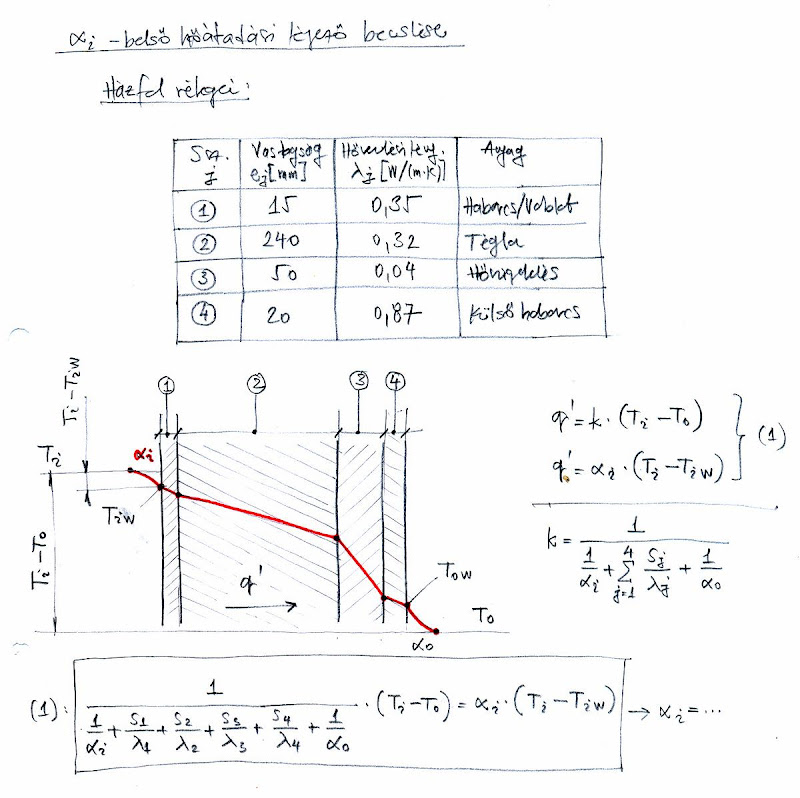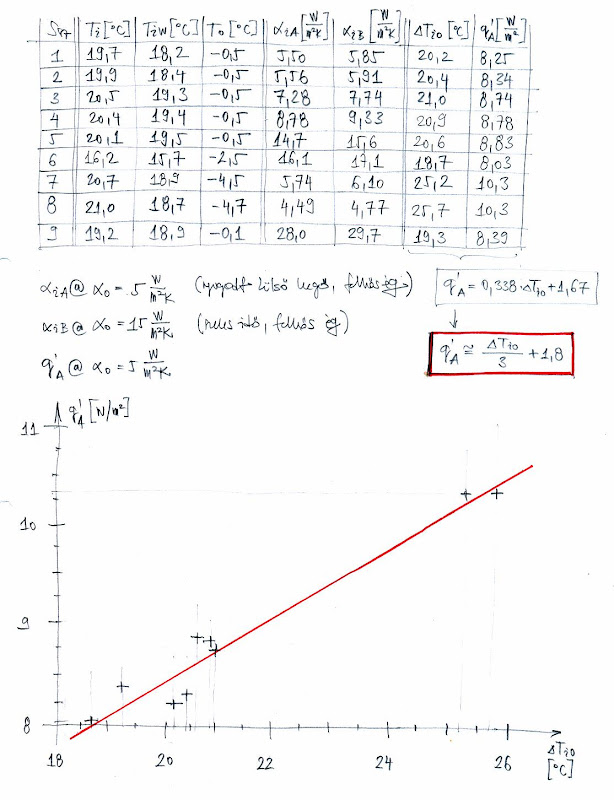Re: The lost formula
Message #6 Posted by Csaba Tizedes (Hungary) on 26 Jan 2011, 5:59 a.m.,
in response to message #5 by John B. Smitherman
I have a good mercury-filled thermometer (scale divided into 0.5C from 0C-100C, and approximate the temperature +-0.1C). I used a simple plasticware, filled with ~half liter water then I was cooled slowly with snow. If temperature not changed I was read a measuring point data.
Some approximately data about my house wall's heat loss:
1.) I assume that the wall have four layer (see the table: 2nd is the brick layer, 3rd is the heat-isolation layer and 1st and 4th the inner and outer mortar/grout (I dont know how to say it in English)).
2.) I want to know the inner heat transfer coefficient (alpha_i [W/(m2*K)]), so I wrote a heat flux from dining-room wall "inner" side to "outer" (ambient) , then I wrote some equation from "inner" side to inner wall surface. In this points the temperatures measurable (Ti, Tiw, To), and then I solved this equation (1) to alpha_i.
3.) With this coefficient the heat flux calculated: q'A [W/m2]=alpha_i*(Ti-Tiw)
4.) Then I plot this heat flux as function of temperature difference.
Unfortunately I have not measuring points yet at dT=22...24C.
Scans about it:


The coloumn alpha_i_A calculated at alpha_o=5 W/(m2*K) (no wind, cloudy weather) and alpha_i_B calculated at alpha_o=15 W/(m2*K) (windy, cloudy weather)
|